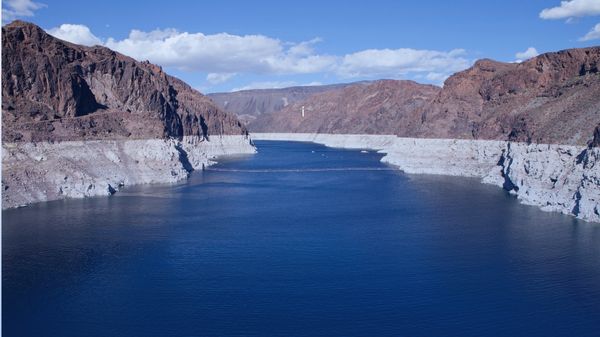Are you considering the switch to renewable energy? Before you make a decision, it’s important to understand the advantages and disadvantages of renewable energy as an alternative energy source.
Renewable energy offers numerous benefits, such as lower maintenance requirements and long-term cost savings. It also helps to protect the environment and reduce reliance on foreign energy sources. However, there are challenges to consider, including higher upfront costs and the intermittent nature of energy supply.
Join us as we explore the advantages and disadvantages of renewable energy in this informative article.
Renewable Energy: An Overview
Renewable energy is a sustainable and eco-friendly alternative to traditional energy sources. It offers numerous advantages and disadvantages that are important to consider.
On the positive side, renewable energy has lower maintenance requirements and can save both time and money. It also results in long-term cost savings as there is no need to pay for refueling.
Moreover, renewable energy sources have significant environmental benefits, reducing greenhouse gas emissions, and improving air and water quality.
They also help decrease health issues caused by pollutants. Additionally, renewable energy reduces reliance on foreign energy sources, promoting energy independence and minimizing geopolitical risks.
However, there are some drawbacks to consider, such as higher upfront costs, intermittent energy supply, and the need for energy storage. Geographic limitations and the carbon footprint associated with manufacturing and transportation processes are also factors to take into account.
Despite these cons, the future potential of renewable energy is promising, with advancements in technology and various types of renewable sources being developed.
Key Advantages of Renewable Energy Sources
When considering renewable energy sources, you can benefit from lower maintenance requirements and save time and money. Renewable energy systems have fewer moving parts and don’t rely on flammable fuel sources, resulting in lower maintenance needs. This saves you time and money in the long run.
Additionally, renewable energy eliminates the need to pay for refueling, leading to long-term cost savings. Transitioning to renewable energy can save you hundreds to thousands of dollars, depending on the technology.
Moreover, renewable energy sources offer environmental advantages. They produce low to zero greenhouse gas emissions, reducing your carbon footprint and mitigating climate change. Renewable energy also helps decrease harmful pollutants that cause respiratory and cardiac health issues.
Article Post: Synergizing Solar and Wind: A Powerful Green Solution.
Economic Benefits of Renewable Energy
To maximize your economic benefits, consider the cost savings and reduced reliance on foreign energy sources that renewable energy offers.
Renewable energy provides economic viability by creating job opportunities and stimulating economic growth. Transitioning to renewable energy sources creates a demand for new technologies, which in turn generates investment opportunities.
The cost savings associated with renewable energy are significant. By eliminating the need for refueling, you can save hundreds to thousands of dollars in the long run.
Additionally, investing in renewable energy reduces the negative impact on the environment, resulting in cleaner water and air. By producing energy locally, renewable energy decreases reliance on imported energy, contributing to U.S. energy independence.
Embracing renewable energy not only benefits the environment but also offers numerous economic advantages, making it a wise choice for sustainable development.
Environmental Impact of Renewable Energy
Investing in renewables helps create a healthier atmosphere and reduces health risks associated with pollution. Renewable energy sources produce low to zero greenhouse gas emissions, resulting in cleaner water and air. The environmental impact of renewable energy is significant, with sustainability benefits that include carbon footprint reduction and pollution reduction.
By transitioning to renewable energy, we can reduce our carbon footprint and mitigate climate change. This not only helps protect the planet for future generations but also decreases harmful pollutants that can cause respiratory and cardiac health issues. Compared to burning fossil fuels, renewable energy has a lower negative impact on the environment.
Investing in renewables allows us to enjoy the health advantages of a cleaner environment while also contributing to a more sustainable future.
Related Post: How to Calculate Carbon Footprint: 7 Best Tools for the Job.
Energy Independence Through Renewable Sources
By producing energy locally, renewable sources decrease reliance on imported energy, contributing to U.S. energy independence. This has several geopolitical benefits.
Firstly, it enhances energy security by reducing vulnerability to disruptions in the global energy market. By relying less on foreign energy sources, the United States can better control its own energy production and consumption.
Additionally, local production of renewable energy reduces the influence of volatile international oil prices. This stability in energy costs can provide economic advantages and reduce the impact of energy price fluctuations on consumers.
Furthermore, energy independence through renewable sources promotes environmental sustainability by reducing greenhouse gas emissions and reliance on fossil fuels. Transitioning to renewable energy is a step towards a cleaner and more sustainable future, ensuring a secure and prosperous nation for future generations.
Related Post: Choosing the Best Renewable Energy Source: Magnets or Wind?
The Downside: Disadvantages of Renewable Energy
The higher upfront costs of renewable technologies can be offset by financial incentives like tax credits and rebates. While renewable energy offers numerous advantages, it also has its share of disadvantages.
One major drawback is the cost implications. Renewable energy technologies tend to be more expensive upfront compared to traditional energy generators. However, financial incentives such as tax credits and rebates can help alleviate the initial costs.
Another concern is the intermittency of renewable energy resources. Unlike fossil fuels, which provide a continuous energy supply, renewable energy sources are not available 24/7, leading to inconsistent energy supply. Additionally, some renewable energy sources require energy storage, which can be expensive, especially for large-scale plants.
Furthermore, the suitability of renewable technologies varies based on geography, climate, and topography, presenting geographic limitations.
Lastly, while renewable energy significantly reduces carbon emissions, the manufacturing and transportation processes can still have a carbon footprint, impacting the environment.
Initial Costs and Financial Implications
To get started with renewable energy, you’ll need to consider the upfront costs and financial implications. Renewable energy financing and cost analysis are crucial in determining the feasibility of transitioning to renewable energy sources.
While renewable energy technologies may have higher upfront costs compared to traditional energy generators, government incentives such as tax credits and rebates can help alleviate these initial expenses. It’s important to conduct a thorough cost analysis to assess the investment return and potential financial barriers.
The Challenge of Energy Storage and Intermittency
Renewable energy resources, despite their intermittent availability, present a challenge when it comes to energy storage. The intermittent power supply from renewable sources like wind and solar can lead to grid instability if not properly managed. This is where energy storage comes into play.
Energy storage challenges arise due to the need to store excess energy generated during periods of high production and release it during times of low production. However, advancements in battery technology are addressing these challenges.
Battery technology advancements are making energy storage more efficient, affordable, and scalable. This allows for better integration of renewable energy into the grid, ensuring a stable and reliable power supply.
As renewable energy continues to play a significant role in our energy mix, addressing energy storage challenges becomes essential for a sustainable and resilient energy future.
Geographical Constraints
Now let’s discuss the geographical constraints in harnessing renewable energy. Suitability challenges arise due to resource availability, regional differences, climate considerations, and topographical limitations.
Not all areas are equally suitable for harnessing renewable energy. For example, regions with low wind speeds may not benefit from wind farms, while areas with limited sunlight may not be ideal for solar power.
Coastal regions may have the potential for harnessing tidal or wave energy, but inland areas may not have access to these resources. Topographical limitations, such as rugged terrains or dense forests, can also pose challenges for implementing renewable energy projects.
It is crucial to consider these factors when planning and designing renewable energy systems to maximize their effectiveness and minimize potential setbacks.
The Carbon Footprint Impact
Let’s take a closer look at the carbon footprint of renewable energy and its impact on the environment.
While renewable energy sources significantly reduce carbon emissions compared to fossil fuels, they are not entirely carbon-free. The manufacturing and transportation processes involved in renewable energy technologies can still contribute to carbon emissions.
However, it’s important to note that the carbon footprint of renewable energy is much smaller compared to traditional energy sources. Efforts are being made to reduce carbon emissions in the manufacturing of renewable energy systems and improve transportation efficiency.
Additionally, advancements in technology and increased adoption of renewable energy are expected to further decrease the carbon footprint.
Related Post: Sustainable Living Innovations: Innovative Ideas for A Greener Life.
Conclusion
While there are some drawbacks to consider, the advantages of renewable energy far outweigh the disadvantages. One anticipated objection is the higher upfront costs of renewable energy technologies. However, it is important to recognize that these costs are decreasing over time as technology advances and economies of scale are achieved.
By emphasizing the long-term cost savings, environmental benefits, and energy independence that renewable energy offers, it becomes clear that investing in renewable energy is a wise choice for a sustainable future.




